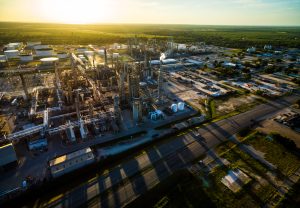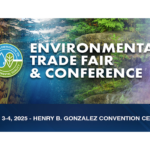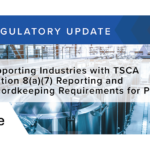
In Leander, Texas, Phase 2 Environmental Site Assessments (ESAs) play a crucial role in evaluating the environmental conditions of a property. Understanding the purpose and process of these assessments is essential for property owners, developers, and regulatory agencies involved in land transactions or redevelopment projects. This article provides an in-depth overview of Leander Phase 2 ESAs, highlighting their definition, key components, regulatory framework, implications, and future trends.
Understanding Phase 2 Environmental Site Assessments
Definition and Purpose of Phase 2 Environmental Site Assessments
Phase 2 ESAs are investigations conducted to assess the environmental quality of a potentially contaminated site, usually identified during Phase 1 ESAs or due diligence activities. The primary purpose of Phase 2 assessments is to determine the presence and extent of contamination, evaluate the risks posed to human health and the environment, and establish the need for remediation or further investigation.
Key Components of Phase 2 Environmental Site Assessments
A Phase 2 ESA typically comprises several critical components that involve site inspections, laboratory testing, and comprehensive reporting. These assessments are tailored to the specific site and contaminant of concern, ensuring a systematic and thorough evaluation of the environmental conditions.
- Initial Site Inspection and Data Collection: The first step in a Phase 2 ESA involves a detailed site inspection to identify potential sources of contamination, collect soil, groundwater, and air samples, and document observations regarding the existing infrastructure and land use history.
- Laboratory Testing and Analysis: Following the site inspection, collected samples undergo laboratory testing and analysis to determine the presence and concentration of contaminants. Both qualitative and quantitative analysis techniques ensure accurate identification and measurement of pollutants.
- Reporting and Recommendations: Once the laboratory results are obtained, a comprehensive report is prepared, presenting the findings, interpretations, and recommendations. This report assists stakeholders in making informed decisions regarding property transactions, redevelopment, or remediation strategies.
The Process of Conducting Phase 2 Environmental Site Assessments in Leander
Initial Site Inspection and Data Collection
The initial site inspection involves a meticulous assessment of the property, including soil, groundwater, surface water, and air quality examination. Soil samples are collected using appropriate sampling techniques, considering the contamination source location and depth. Groundwater wells are installed and monitored to evaluate the vertical and horizontal extent of contamination, if present.
Additionally, the inspection involves gathering information about the property’s history, previous land uses, and any potential contamination sources nearby. This data collection phase forms the foundation for subsequent laboratory testing and analysis.
Laboratory Testing and Analysis
Once the initial site inspection is completed and the samples are collected, they are sent to accredited laboratories for analysis. Highly sensitive techniques such as gas chromatography-mass spectrometry (GC-MS), atomic absorption spectroscopy, and polymerase chain reaction (PCR) are commonly employed to identify and quantify contaminants.
The laboratory analysis provides crucial information about the quality and composition of the soil, groundwater, and other environmental media. Through comprehensive analysis, the presence of pollutants, their concentration levels, and potential risks to human health and the environment are identified.
Reporting and Recommendations
Based on the laboratory findings, a detailed report is compiled, highlighting the methodology, results, and interpretations. The report includes clear and concise recommendations concerning appropriate measures to address any detected contamination.
The recommendations provided in the report are crucial for facilitating decision-making processes concerning land transactions, development plans, and potential remediation strategies. They ensure that stakeholders have the necessary information to address environmental concerns effectively and align their actions with regulatory requirements and best practices.
Regulatory Framework for Phase 2 Environmental Site Assessments
Federal and State Regulations
The regulatory framework for Phase 2 ESAs in Leander is primarily governed by federal and state environmental regulations. The U.S. Environmental Protection Agency (EPA) sets national standards and guidelines for assessing, remediating, and managing contaminated sites, including the Comprehensive Environmental Response, Compensation, and Liability Act (CERCLA) and the Resource Conservation and Recovery Act (RCRA).
At the state level, the Texas Commission on Environmental Quality (TCEQ) oversees environmental site assessments and ensures compliance with specific regulations, such as the Texas Risk Reduction Program and the Texas Voluntary Cleanup Program. These regulations provide a structured approach to conducting Phase 2 ESAs while safeguarding human health and the environment.
Compliance and Enforcement
The compliance and enforcement of Phase 2 ESA regulations in Leander are integral to maintaining the integrity and effectiveness of the assessment process. Regulatory agencies, such as the TCEQ and the EPA, conduct inspections and audits to ensure that responsible parties comply with the applicable regulations and guidelines.
Non-compliance with regulatory requirements can result in penalties, fines, or legal action. Therefore, it is imperative for property owners, developers, and consultants involved in Phase 2 ESAs to adhere to the established standards and maintain transparency throughout the assessment process.
Implications of Phase 2 Environmental Site Assessments
Impact on Property Value and Development
Phase 2 ESAs have significant implications for property values and development projects in Leander. These assessments provide valuable information about the environmental conditions of a site, which potential buyers or investors consider before making decisions.
If contamination is detected, it may impede property development or require additional remediation efforts, leading to potential delays and increased costs. Conversely, completed Phase 2 ESAs with clean results enhance property value and attract environmentally conscious buyers or developers who prioritize sustainable practices.
Environmental and Health Risks
Phase 2 ESAs are crucial for evaluating the potential risks associated with contaminated sites. The presence of pollutants can pose threats to ecosystems, surface water quality, and human health through direct contact or exposure pathways like inhalation or ingestion.
By conducting comprehensive Phase 2 ESAs, potential risks can be identified and appropriate measures can be implemented to mitigate these risks, safeguarding the environment and public health. Understanding the implications of contamination allows for informed decision-making and proactive steps towards remediation or risk management.
Future Trends in Environmental Site Assessments
Technological Advancements in Site Assessments
Rapid advancements in technology are revolutionizing the field of environmental site assessments. Innovative tools, such as remote sensing techniques, drones, and advanced analytical instrumentation, are enabling more accurate and efficient data collection, analysis, and visualization.
These advancements not only enhance the accuracy and reliability of Phase 2 ESAs but also contribute to cost and time savings. The integration of artificial intelligence and machine learning algorithms into the assessment process holds great potential for streamlining data interpretation and improving decision-making.
Evolving Environmental Policies and Their Impact
Environmental policies and regulations are continuously evolving to address emerging challenges and embrace sustainable practices. As societal awareness of environmental issues grows, policymakers are placing greater emphasis on protecting natural resources and minimizing the impact of human activities.
The future of Phase 2 ESAs will likely witness more stringent regulations, higher expectations for environmental transparency, and a greater emphasis on sustainability. Stakeholders will need to stay abreast of these developments and adapt their practices to align with the evolving policy landscape.
In conclusion, Leander Phase 2 Environmental Site Assessments are critically important for evaluating the environmental conditions of properties in the area. By understanding the purpose, process, and key components of these assessments, stakeholders can make informed decisions regarding property transactions, development plans, and potential remediation strategies. Adhering to the regulatory framework and assessing the implications of contamination on property value and environmental and health risks are essential. Moreover, embracing technological advancements and keeping abreast of evolving environmental policies will ensure the continued relevance and effectiveness of Phase 2 ESAs in Leander.
As environmental challenges evolve and the need for thorough Phase 2 Environmental Site Assessments in Leander becomes increasingly critical, partnering with a knowledgeable and experienced environmental consulting firm is essential. ESE Partners, with our commitment to responsibly moving business forward through environmental problem solving, stands ready to assist you. Our team of experts is equipped to provide comprehensive assessment, remediation, and compliance services tailored to your unique needs. Embrace the future of environmental due diligence and enhance your project’s success by Requesting A Proposal from ESE Partners today.








